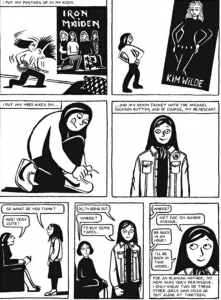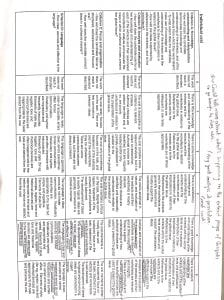Happily Divorced (episode 6) – Esther Perel
- Focus on a Central idea
Esther Perel uses these elements in her podcast really well as she shows clearly what she is trying to address to the audience both directly and indirectly through this podcast analysing the situation of the couple who thinks that they are actually divorced but they are not intellectually.
21:00 “. You’re a LAT. You live apart, but you are together. You could say, “We are divorced,” or you could say, “We have a new marriage”
3:30 “Confrontation. Even though I’m a litigator and I confront personally” one of the main reasons that led to their divorce and avoidance from the husband when the wife was trying to make the relationship stronger.
In addition, through her divorce she didn’t want her son to experience the same thing that the she had to experience when her parents divorced when she was 10 years old. both of them wanted to put their son’s needs above their own “13:00 When we divorced, it was very important to me to make sure that our son was not dragged into the middle of it because our problems or our issues are ours and not his. I think it’s worked. Like I said, he’s a very good father.”
- Play to the audience
- Esther Perel knows her audience well and her analysis of the situation brings them together. On the other hand, her podcast also refers to most of the audiences in America who are also middle class and are around 30 -40 years old ’s situation and how to analyse them
- 22:30 “Mexican-American, and we grew up Catholic. It has a particular effect when you use the word marriage.”
- In America only a quarter of the population believe that actual monogamy is not realistic but they also know that marriages can’t be warm and fuzzy all the time. On the other hand jealousy and poverty being one of the most real dampeners. This fact is also shown in the podcast of the couple as well. For example in “10:30 “He’s very concerned about wanting to be financially responsible” “27:00 First, you would’ve complained, “We can’t afford it,” when Esther mentioned that one of the reasons was him being jealous of her when she got talk with her mother while he did not as he mother passed away “39:00 The real thing was he was jealous
- Regular schedules
- Esther Perel’s season 3 podcast starting with episode 1 (young love) which started in October 10 2019 , 2 (A small town affair in Oct 17 2019), 3 (The other women in Oct 24 2019), 4(The romantic revival in Oct 31st 2019), 5(Mom and Monique Nov 7 2019 ) and 6 (Happily divorced in Nov 14 2019 ) where all podcasts were scheduled to air on the Thursdays of the week.
- Show Structure
- She starts the conversation by understanding their situation first so that she can analyse it as they talk “00:30 I always ask people why they choose to come and share their story with me. Particularly in this couple, I was intrigued.”
- She then slowly moves into what was problematic and how it started; speaker 1 3:30 “That’s right, I’m avoidant.” “Confrontation. Even though I’m a litigator and I confront personally.”
- Esther Perel then tries to know about why they are like that which relate to their past, especially the wife as she says that she doesn’t want her son to experience the same thing that she had experienced before when her parents divorced and how it affected her. 12:30 “When we divorced, it was very important to me to make sure that our son was not dragged into the middle of it because our problems or our issues are ours and not his. “
- as they talk about their past experiences and how it affected both of them, it even led to one of the reasons for why the husband was being confronted and ignorant most of the time with her. The reason was her mother “ How dare you talk to your mother every day when I can’t? Not just I can’t because my mother is dead, but even if I did, I would never know if I would have a good day or a bad day with my mom. How dare you have such a wonderful time” —> 38:00 “. I was so resentful of her mother, and the thought of going down there and being subsumed in all of that. She has this family. She has all of this. I just have the memories of a mom who was simultaneously really great, and sacrificed, and all of it but carrying around all of the other stuff.”
- Towards the end of the conversation, Esther Perel makes a judgement about the couple (is typical of Esther Perel podcast) “48:30. I think these people finally have the relationship that they both would want.”
- authenticity
- From my point of view, the couple’s situation and how Esther analyses their situation by asking them questions seems authentic as it is based on reasons and experiences from both the parties. If the opinions of the couples; while sharing their reasons for the divorce were not really related then I would say it is less authentic
……..(not so sure)




